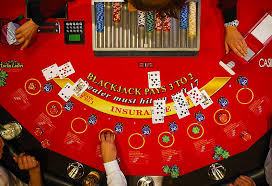
With more and more casinos going to a 6:5 blackjack payoff, you should understand the significant difference this makes.
The casual blackjack player is not going to care, or may not even realize there can be a different payout on blackjack from table to table. They may feel they would rarely get blackjack, so it’s no big deal to them.
The problem is that the difference can really hurt your potential profits. The draw to these games is that they’re usually single-deck games, which many casual players feel is more advantageous.
The odds of hitting a blackjack are actually 1 in every 21 hands over a lifetime, coincidentally. For example, if you’re playing at a 4-handed table, for five hours, at a $10 per hand, you’ll probably hit 21 blackjacks in that time period.
Out of those 21 blackjacks, let’s say you push on 2 of them because the dealer is mean like that. You’ll be paid on 19 blackjacks. At 6:5 on a $10 bet, you’ll be paid $12. At 3:2 on a $10 bet, you’ll be paid $15. That makes for a difference of $57. Because the house pays 6:5, instead of the traditional 3:2, they have ripped you off of $57! That may not seem like a lot, but if you played 10 times, being cheated out of $57 each session, that’s $570 after 10 visits!
That payout difference gives the house about a 1.4% additional edge in the game. If you only play once or twice a year, it won’t be a big deal to you, but if you’re going to be a regular player, it’s a killer!
Here’s a chart that shows the results of that difference:
| Blackjack Payoff | Standard Daily Win/Loss Range | Ave. Daily Result | Average Year | Statistical Odds Against a Winning Year |
| 3 -to- 2 | +$210/-$265 | ($28) | ($330) | 2 to 1 |
| 6 -to- 5 | +$150/-$325 | ($88) | ($1,000) | 9 to 1 |
Additional drawbacks of a 6:5 payoff:
- If you don’t make a bet divisible by 5, your payoff will not be totally paid at 6:5. For instance, if you bet $8, you will get $6 for the first $5, but the last $3 will be paid at even money, resulting in a payout of $9. (instead of the $9.60 it should be at full odds) At a 3:2 odds payout, any even amount bet will get the full 3:2 payout.
- The even money payoff on a blackjack if the dealer shows an Ace, is not allowed in a 6:5 game because of the uneven payout.
- It also impacts dealer tips. In a 3:2 game, a $1 tip to the dealer pays him $1.50, whereas as $1 tip in a 6:5 game is only a $1, because small change is not handled. (the tip should pay $1.20)
- Not really a drawback, but you wouldn’t find a 6:5 payout on a high stakes table. The high rollers know better than to stand for that ripoff!
Final Thoughts
Remember, blackjack is popular because the house edge is low, now casinos are looking to change that and this is a simple way for them to up their edge. They know the casual tourist player, or uninformed beginner, will not realize the difference.
Try not to play at 6:5 tables. Don’t fall for the single-deck ploy and lower minimum bets, it’s not a better deal if blackjack pays 6:5. Perhaps if casinos see a drop in play at the 6:5 tables, they’ll bring back more 3:2 tables, which is what we want! Unfortunately, it will probably end up the way it’s going now…more 6:5 tables with lower minimum bets, and the 3:2 payout tables left for the high stakes players.






